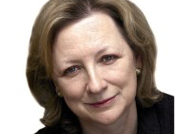Carla Carlisle in Paris
La Grande Mosquee in Paris is a new discovery for Carla but while enjoying a glass of mint tea and an Arabic pastry, she wonders why the same experience isn’t available at London’s Central Mosque


I'm sitting in a courtyard beneath an olive tree, drinking a glass of hot mint tea and eating a kaab el ghzal (gazelle s horn), a delicious crescent shaped pastry stuffed with ground almonds. This has become my late morning ritual and the waiters now recognise me. Yesterday, I bought a ticket for 3 euros and wandered around the mosque, watching the gardeners plant out the garden. Although visitors aren't allowed in the prayer room, I peeked inside the large, dimly lit room oriented towards Mecca, where men sat casually on the floor, leant against the pillars, read from books. La Grande Mosquée de Paris is a 10-minute walk from rue Claude Bernard. I passed it by chance on my way to the Jardin des Plantes. It isn't mentioned in my Michelin Green Guide (2001), although it's an architectural treasure, built by the French government to honour the North Africans who died for France in the First World War. When I
asked a French friend why it was built in the 5th arrondissement, she told me that cultural relations between France and the Arab world have been concentrated on the left bank of the Seine since the 16th century, the first links established between the Sorbonne and the College de France. Arabic was seen as key to learning, medicine and philosophy. Under Louis XIV, the first translation of the Koran was produced.
In the 19th century, Paris was a meeting place for the Arab intellectual elite, reinforced by the colonisation of North Africa. In 1856, a Muslim square was created at the Père Lachaise cemetery, and finally La Grande Mosquée was inaugurated in 1926. Less well known: in the Second World War, the mosque was part of the Résistance during the Nazi occupation of Paris, providing refuge and false identity papers for more than 1,500 French Jews, mostly children. La Grande Mosquée seems a world away from the grim Paris suburbs where angry Arab youths have rioted and burned cars. This is a peaceful world, where French families come for a Saturday lunch of couscous and tajines, where young French women meet friends for a hamman. The foyer off the garden courtyard looks like a Citizen's Advice Bureau, and in a way, it is. Here, disputes are quietly resolved, a version of Sharia law that operates like a meeting with your parish priest. The advice is respected, although agreements aren't given legal recognition by the French state.
The meetings are followed by another ritual: three glasses of mint tea, the fragrant mix of mint leaves, green tea and cane sugar that is considered 'a gift of Allah', yet was only introduced to the Moroccans in 1854, during the Crimean war, by British merchants in search of new markets. The French newspapers have seized on the dilemma of the Archbishop of Canterbury. 'Intellectually arrogant and naïve,' concludes Le Monde. Le Figaro criticises les Anglicans 'who only retain the provocative part of his message'. In the same way that the Franch ignore much EU legislation, they turn a blind eye to the practice of Sharia law as long as it doesn't conflict with the Napoleonic code. Meanwhile, I wish that mosques in London were as open and hospitable as this. Instead, the wall between the Muslim community and the rest of Britain grows ever more impenetrable. It wasn't always thus. In 1940, Winston Churchill's wartime government allocated £100,000 for the 2.3-acre site next to Regent's Park, for the building of London s Central Mosque, in gratitude to the many Muslims who fought with the British in two world wars.
Exquisite houses, the beauty of Nature, and how to get the most from your life, straight to your inbox.
Country Life is unlike any other magazine: the only glossy weekly on the newsstand and the only magazine that has been guest-edited by His Majesty The King not once, but twice. It is a celebration of modern rural life and all its diverse joys and pleasures — that was first published in Queen Victoria's Diamond Jubilee year. Our eclectic mixture of witty and informative content — from the most up-to-date property news and commentary and a coveted glimpse inside some of the UK's best houses and gardens, to gardening, the arts and interior design, written by experts in their field — still cannot be found in print or online, anywhere else.
